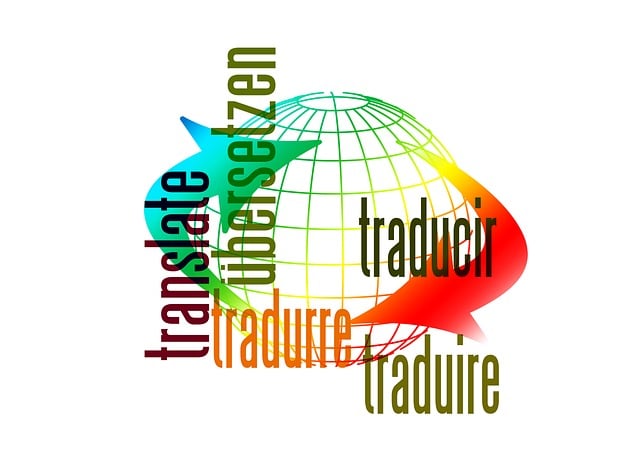AI is everywhere now, quietly slipping into our emails, chat boxes, subtitles, and even the words we speak across different languages. It’s slick, fast, and often feels like magic. But when it comes to translation, things aren’t always as smooth as they seem. You might think your AI-powered translator nailed that sentence in Spanish or Japanese—but in reality, you could be walking around saying something completely bizarre, or even offensive, without realizing it. There’s a lot that AI still gets wrong in translation, and these errors can really matter, especially in global business, healthcare, or even when texting someone halfway around the world.
Let’s dig into the real, behind-the-scenes problems AI translation tools keep running into—and how you can avoid falling into their trap.
It misses the meaning when context changes
One of the biggest struggles for any AI translator is understanding context. Sure, it can look at individual words or even sentence structures. But AI doesn’t truly get what you’re saying the way another person does. Say you type in “I’m feeling blue.” A human knows you’re probably talking about being sad. An AI translator? It might think you’ve turned into a Smurf.
The problem here is that many AI tools work sentence by sentence. They don’t look at what came before or after. They don’t know who’s speaking or why. And that makes the translated version feel robotic, weirdly formal, or just plain wrong. This gets even trickier with things like sarcasm, humor, or casual speech. AI might translate “great job” as praise, even if you were using it sarcastically in a text to a friend who just made a huge mistake.
So what do you do? If you’re using AI to translate something important, try to review the entire piece of text—not just one sentence at a time. Feed it fuller conversations or paragraphs. And when it still feels off, go with your gut and get a second opinion from someone who knows both languages. AI is a great tool, but it’s still not a mind reader.
It can’t handle slang, dialects, or local flavor
If you’ve ever traveled to another country and tried using a translation app, you’ve probably noticed this: AI translation software is not great at keeping up with how real people actually speak. It’s trained on textbooks, formal documents, and sometimes things like product manuals. But it’s not hanging out at the local coffee shop or reading Twitter threads full of Gen Z slang. That means it struggles with the stuff that gives language its personality.
Say someone in Southern Italy is using a dialect that barely resembles standard Italian. Or your friend in Mexico sends you a message using regional slang. The AI translator? It might turn it into gibberish—or worse, translate it literally and miss the point entirely. And don’t even get started on jokes, puns, or wordplay.
This also becomes super obvious when AI is used to subtitle things like movies or videos made for social media. You’ll get weird translations that miss the vibe of what’s being said. And that brings us to a surprising side of this whole issue—how translation works when it’s paired with an AI video generator from image. Never before has this much creative control been in the hands of the everyday user, yet the translations can still derail everything if they miss cultural nuance.
To avoid these kinds of errors, make sure your source language is as clear and standard as possible. You don’t have to sound like a robot, but keeping slang to a minimum helps. If you’re trying to translate something rich with cultural tone, consider getting help from a human translator—at least for the final version.
It doesn’t understand emotions or tone
Language isn’t just about facts. It’s about feeling. There’s a huge difference between saying “I’m tired” in a neutral tone and saying it with frustration, sadness, or even flirtation. Human listeners instantly pick up on that. AI? Not so much.
When you use AI to translate emotionally charged content—like personal stories, love letters, or even marketing messages—it often flattens everything into the same dry tone. That’s because it’s not emotionally intelligent. It doesn’t recognize tone shifts or dramatic pauses or ironic phrasing. And while AI is starting to move into AI storytelling, that same flatness can bleed into translated content, making it feel lifeless or even confusing.
This really matters if you’re writing something that depends on human connection. Whether it’s a nonprofit message asking for donations, or a heartfelt thank-you letter to a customer overseas, you don’t want your message to come across cold just because the AI couldn’t catch the tone.
If you’re using AI for anything emotional, you might need to do more than edit the final translation. You may need to rewrite it completely after reviewing how it sounds in the second language—just to make sure your heart still comes through.
It struggles with pronouns and gendered language
Another spot where AI translation tools tend to fumble? Pronouns. Especially in languages that have gendered words or formal versus informal versions of “you.” Some languages, like English, are a little more relaxed about this. But in others—like German, French, or Arabic—getting the gender or formality wrong can totally change the meaning, or even come off as disrespectful.
AI often guesses, based on sentence structure, and it’s not always right. It can default to masculine forms even when that’s not appropriate. Or it might mix up who you’re talking to, turning a polite message into something overly casual, or vice versa. And when you’re using AI for business? That can be embarrassing—or worse.
There’s also a deeper level of sensitivity here, especially when people want to express nonbinary identities or avoid assumptions. While human translators are catching up with these changes in how we use language, AI often lags behind. And that matters.
One fascinating solution showing up in newer AI products is the use of a digital avatar—not just as a speaking face, but as a bridge for emotionally and socially accurate translations. These avatars can reflect tone, facial expression, and speech rhythm in ways that pure text can’t. They’re part of a future where translation becomes more immersive, more humanlike, and way more accurate. If you’re working in video or customer-facing content, using tools that include this kind of real-time avatar translation could seriously boost both clarity and trust—never before or again has language technology looked quite like this.
It mixes up similar words—And doesn’t even know it
Here’s a quiet little problem that can create some pretty big issues: AI translation software loves to mix up words that look or sound alike. Think about the words “sensitive” and “sensible.” Or “actual” and “current.” In some languages, these are known as false friends—words that sound like their English equivalents but mean something totally different.
The issue is, AI doesn’t always catch the trick. So it might translate a word too literally, or assume it means the same thing when it doesn’t. This is especially risky in things like legal documents, contracts, or anything where precision matters. One word off, and the entire meaning changes.
So here’s your move: always double-check anything important. If a word looks a little too perfect or just doesn’t sit right, run it by someone who really knows the language. Or even plug it into a second translation tool to compare results. You’ll be surprised how often things don’t match up—and how often you catch a mistake that way.
It can’t always keep cultural references straight
Language doesn’t just come with grammar and vocabulary. It comes with cultural baggage—references, history, inside jokes, and shared moments that make sense only if you’re part of that culture. And AI? It usually doesn’t get that stuff.
Say you make a reference to a famous local TV show or a sports team, and ask AI to translate it. It’ll probably just translate the words literally, which ends up being confusing or meaningless. It might even sound like you’re making up nonsense. Or worse, if there’s a reference that means something very different in another culture, the AI could translate it in a way that sounds offensive or strange.
AI is learning fast, but it still lacks a sense of what matters to people in different places. It doesn’t know which references land, and which ones fall flat. That’s why it’s important to think about cultural clarity when writing something meant for translation. Either avoid hyper-specific references or replace them with something more universal when possible.
Final thoughts
AI translation is powerful. It’s fast. It’s useful. And it’s only getting better. But it’s still not human. And that means there’s still a gap between what we say and what AI thinks we mean. Until that gap shrinks—and it will—you’ve got to stay alert, review your translations closely, and trust your instincts when something feels off.
Language is about people. It’s emotional, messy, and full of nuance. AI might be good with words, but for now, it still needs your human brain to get the message exactly right.











Leave a Reply